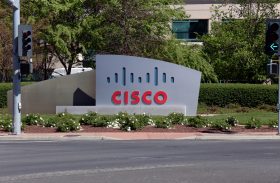Cisco ACI 3.0 Adds Multisite, Kubernetes Support

Cisco (CSCO) advanced its case for deploying software-defined networks (SDNs) at scale with improvements in the latest release of the company's Application Centric Infrastructure (ACI) platform, including support for multiple sites as well as Kubernetes, an opensource container orchestration engine that is gaining traction among organizations that have deployed microservices based on containers such as Docker.
Srini Kotamraju, director of product management for Cisco datacenter networking, says ACI 3.0, the latest release, will eventually support 256 different sites. For now, however, Cisco is limiting deployment of ACI 3.0 to five sites. The expectation is that IT organizations will rely on distributed instance of a Cisco SDN to provide higher levels of availability by migrating workloads among multiple datacenters. Kotamraju says it will also enable the deployment distributed applications that are latency sensitive. There will only be a maximum of one second of latency between different instances of ACI, says Kotamraju.
Kotamraju notes that previously Cisco had been able to extend ACI across a metropolitan cluster using Cisco switches and software. But now Cisco is moving to extend its approach to SDNs across multiple datacenters in a way that rivals have yet to be able to match, says Kotamraju.
Supporting Kubernetes
The extended reach also includes support for container platforms. Support for Kubernetes eliminates the need for IT organizations to deploy an additional container networking platform to support containerized applications, says Kotamraju. ACI 3.0 also adds an ability to automatically authenticate workloads in-band, which then allows IT organizations to place them in trusted security groups. Cisco is also making it possible to now more granularly enforce security policies across all the end points within the same security group.
Longer term, Cisco is also working on developing lighter weight instance of "ACI pods" that can be deployed on a remote datacenter without there being a need for high-end Cisco network switches to be in place. Kotamraju says IT organizations should expect to be able to create active-active relationships between controllers to foster federated instances of an SDN spanning multiple datacenters.
Cloud-like management
Cisco officials say they are also upgrading the management interface for its mutli-site, distributed management approach. The Cisco Next Gen User Interface becomes available with ACI 3.0. That management framework provides a more cloud-like management experience versus relying on traditional command line interfaces (CLIs).
Cisco's overall aim with the ACI upgrade is to target larger cloud deployments at scale.
"When you add it all up we'll be able to manage 20,000 ports per site," says Kotamraju.
Cisco claims it already has over 4,000 customers that have deployed ACI on its network hardware. Cisco has also made it clear it intends to extend the reach of ACI beyond its own infrastructure. In many instances, IT organizations are now entering the realm of SDN via infrastructure upgrades on which ACI comes bundled.
Read about Cisco and Viptela's role in SD-WAN Futuriom's premium report, "The SD-WAN Growth Report," which profiles the growth potential and technology platforms for delivering new WAN services from the cloud. It's available now for $595 for a single-user license.















